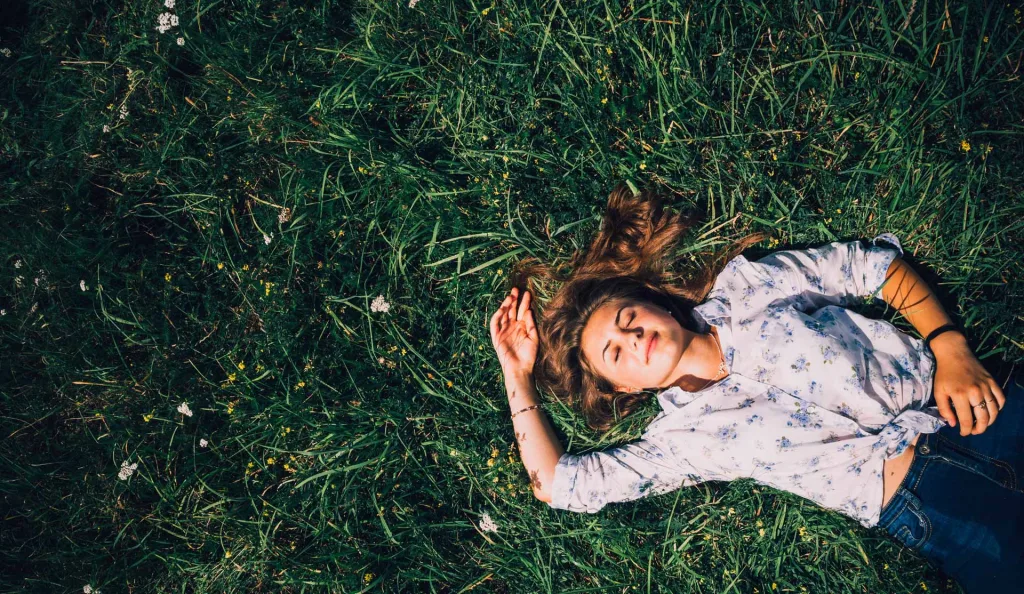While traditional sitting meditation is widely known, there’s a lesser-explored approach that has been gaining attention in recent years: reclining meditation. In this article, we’ll delve into the world of reclining meditation, explore its benefits in comparison to upright meditation, and discuss how to progress in your practice.
Reclining Meditation: Exploring the Benefits
Physical Comfort and Relaxation
One of the primary advantages of reclining meditation is the comfort it provides. Traditional sitting meditation can be challenging for those with physical discomfort or conditions. In a reclining posture, similar to the yoga pose Savasana, you can relax your entire body, releasing tension and achieving a deeper state of physical comfort.
Deep Relaxation
Reclining meditation is a powerful tool for relaxation. The horizontal position signals to your body that it’s time to unwind, making it an excellent choice for stress reduction and achieving a state of deep relaxation.
Enhanced Breath Awareness
Lying down allows you to become more attuned to your breath. You can easily observe the rise and fall of your abdomen and the sensation of the breath moving in and out. This heightened breath awareness can be particularly beneficial for individuals seeking to improve their respiratory function or manage anxiety.
Chronic Pain Management
For individuals with chronic pain conditions, reclining meditation can be a valuable tool for pain management whilst using a supported posture. Mindfulness has been clinically shown to positively contribute to pain management and can improve quality of life.
Reclining Meditation vs. Upright Meditation: Which Is Right for You?
Upright meditation, whether in a traditional cross-legged position or on a chair, is the more common choice. However, the best meditation posture depends on your individual needs and preferences.
Reclining Meditation is ideal for those seeking profound relaxation and those with physical limitations. It’s a great choice for stress relief and bedtime meditation.
Upright Meditation promotes alertness and is preferred by many experienced practitioners. It’s an excellent choice for maintaining focus and a straight posture.

Progressing Your Reclining Meditation Practice
- Mindful Preparation Create a serene meditation space. Ensure your room is dimly lit, free from distractions, and equipped with a comfortable surface. Use a yoga mat or a cushioned area to lie down.
- Set Clear Intentions Before beginning, set your intentions for the meditation. Reflect on why you’re meditating and what you hope to gain from the practice.
- Breath Control Focus on your breath. Observe each inhalation and exhalation. If your mind wanders, which is a common meditation problem, gently bring your attention back to your breath.
- Body Scan Conduct a body scan, starting from your toes and working your way up to your head. Release tension and allow your muscles to relax.
- Expand Your Duration Start with shorter sessions and gradually extend your meditation time. This progression allows your body and mind to adapt.
- Seek Guidance Consider guided reclining meditation sessions, which can offer structure and insights as you advance in your practice.
- Reflect and Journal your Reclining Meditation Session After your meditation, take a moment to reflect on your experience. Keeping a meditation journal can help you track your progress and deepen your practice.
Conclusion
Reclining meditation offers unique benefits, such as deep relaxation and enhanced breath awareness. While it may not replace upright meditation for everyone, it’s a valuable addition to your meditation toolbox. As you progress in your reclining meditation practice, you’ll discover the profound serenity and well-being it can bring to your life. The key is consistency and an open heart to the journey of inner exploration and self-discovery.
